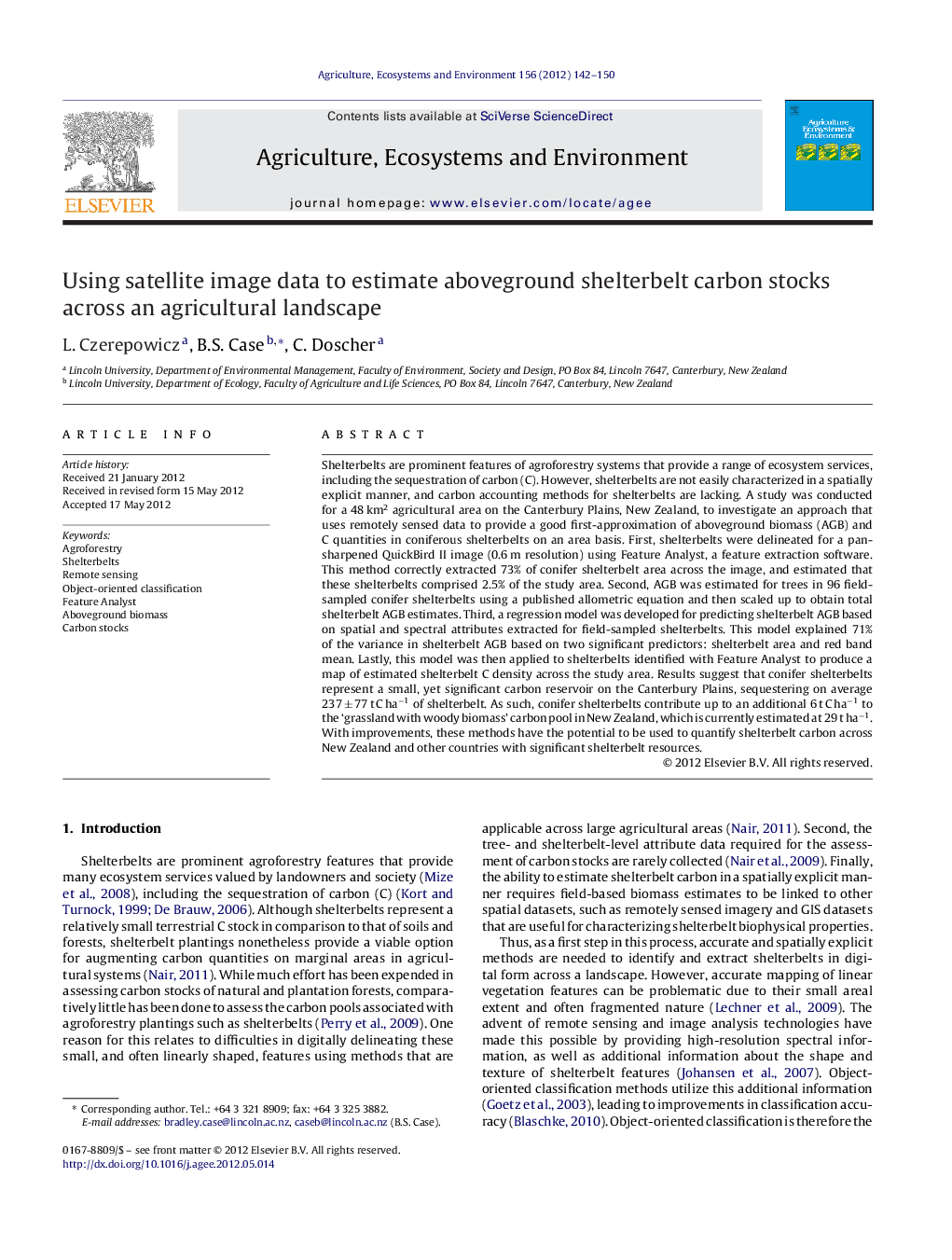| کد مقاله | کد نشریه | سال انتشار | مقاله انگلیسی | نسخه تمام متن |
|---|---|---|---|---|
| 2414482 | 1552096 | 2012 | 9 صفحه PDF | دانلود رایگان |

Shelterbelts are prominent features of agroforestry systems that provide a range of ecosystem services, including the sequestration of carbon (C). However, shelterbelts are not easily characterized in a spatially explicit manner, and carbon accounting methods for shelterbelts are lacking. A study was conducted for a 48 km2 agricultural area on the Canterbury Plains, New Zealand, to investigate an approach that uses remotely sensed data to provide a good first-approximation of aboveground biomass (AGB) and C quantities in coniferous shelterbelts on an area basis. First, shelterbelts were delineated for a pan-sharpened QuickBird II image (0.6 m resolution) using Feature Analyst, a feature extraction software. This method correctly extracted 73% of conifer shelterbelt area across the image, and estimated that these shelterbelts comprised 2.5% of the study area. Second, AGB was estimated for trees in 96 field-sampled conifer shelterbelts using a published allometric equation and then scaled up to obtain total shelterbelt AGB estimates. Third, a regression model was developed for predicting shelterbelt AGB based on spatial and spectral attributes extracted for field-sampled shelterbelts. This model explained 71% of the variance in shelterbelt AGB based on two significant predictors: shelterbelt area and red band mean. Lastly, this model was then applied to shelterbelts identified with Feature Analyst to produce a map of estimated shelterbelt C density across the study area. Results suggest that conifer shelterbelts represent a small, yet significant carbon reservoir on the Canterbury Plains, sequestering on average 237 ± 77 t C ha−1 of shelterbelt. As such, conifer shelterbelts contribute up to an additional 6 t C ha−1 to the ‘grassland with woody biomass’ carbon pool in New Zealand, which is currently estimated at 29 t ha−1. With improvements, these methods have the potential to be used to quantify shelterbelt carbon across New Zealand and other countries with significant shelterbelt resources.
► A method was developed to spatially estimate shelterbelt aboveground biomass (AGB).
► Feature Analyst was used to extract conifer shelterbelts from Quickbird imagery.
► Field-based AGB estimates were modeled against spatial and spectral attributes.
► Shelterbelt AGB was reasonably predicted by shelterbelt area and red band mean (R2 = 0.71).
► Conifer shelterbelts store about 6 t of carbon per hectare of agricultural land in Canterbury, New Zealand.
Journal: Agriculture, Ecosystems & Environment - Volume 156, 1 August 2012, Pages 142–150